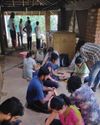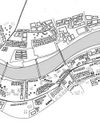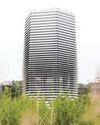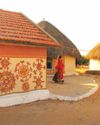The Internet of Things has made science fiction a reality.

Cities are not only becoming wider in terms of their expanse but are also growing in levels, in terms of verticality not only above but also underground. With 2020 just over 365 days away from where we stand today, few years ago our vision for same, was much closer to a doomsday. Rapid urbanization has led to an increasing number of people who are sensitive and responsible in prolonging the advent of collapse. We have a grip on certain aspects especially in terms of understanding the challenges we face and the opportunities they present. We are preparing the current generation to be future ready if not future proof.
In scenarios like today, architects face an inevitable role in growth of not just the city but also the people living in it and envisaging the future roads one might lead. The major new challenge is to build an environment which is more humane in quality and one that becomes the beacon for a global society. We have to find climate-adaptive solutions with sustainability and sensitivity becoming the new “ism” theory. Historic roots and being reverent towards the existing resources provide a basis for connecting theory and practice. The architecture, therefore, has to be more process driven rather than solution based. The relevance of a design process is constantly redefined by the everchanging scenarios and challenges one faces. It is a fusion between the present and the future with hints of ancient roots. These roots form the very foundation of urban growth and planning. Built masses have to be progressive yet derive narratives from the past.
This story is from the November 2018 edition of Indian Architect & Builder.
Start your 7-day Magzter GOLD free trial to access thousands of curated premium stories, and 9,000+ magazines and newspapers.
Already a subscriber ? Sign In
This story is from the November 2018 edition of Indian Architect & Builder.
Start your 7-day Magzter GOLD free trial to access thousands of curated premium stories, and 9,000+ magazines and newspapers.
Already a subscriber? Sign In

Interlacing Perspectives
‘Meraki-2019’ A visionary Seminar series presented by Dr.Baliram Hiray College of Architecture, Bandra(East), Mumbai.

Facilitating A Community Through Architectural Practice
The humble, self-designed, self-built and organically planned home built by the majority of the world population rarely gets appreciated and critiqued as a viable lesson in architectural design.

The Art Of Solving Problems Creatively
The practice of architecture is perhaps incomplete without the complement of a variety of other arts.

Upcycling towards a playful tomorrow
Play is like the middle child, often forgotten, and always taking a back seat. For young kids, play can simply be running around, armwrestling with friends, building sandcastles on the beach, or singing popular music tracks in the shower.

Balancing The Poetics And Pragmatism Of Everyday Design
Humanity is faced with an oxymoronic crisis. The crisis involves the earth, the environment, impending looms of climate change, deforestation, loss of species, dwindling resources etc.

Just Give Me Some Space: Discussions And Beyond
Just Give Me Some Space (JGMSS) is Suha Riyaz Khopatkar’s debut book that paints a portrait of the dynamic life of an architecture student.

The Next In Vernacular Architecture
Architecture has become a capitalist.

Rethinking The Future: Architecture And Its Education
“I want to be like animals, the bird makes a nest in one or two days, the rat digs a hole in a night, but intelligent humans like us spend 30 years to have a house, that’s wrong.” - Jon Jandai

Uniting The Human-Scale With The City-Scale
London-based architect Usman Haque is famed for his interactive architectural systems, and for his exploration of newer, more effective ways of creating human engagement and interaction through his designs. Indian Architect & Builder caught up with him, to quiz him on a variety of topics such as his journey as an architect, his inspirations and philosophies, architects using the digital revolution to their advantage, and more!

Framing spaces
Almost every architect also doubles as a photographer or at least an enthusiast.